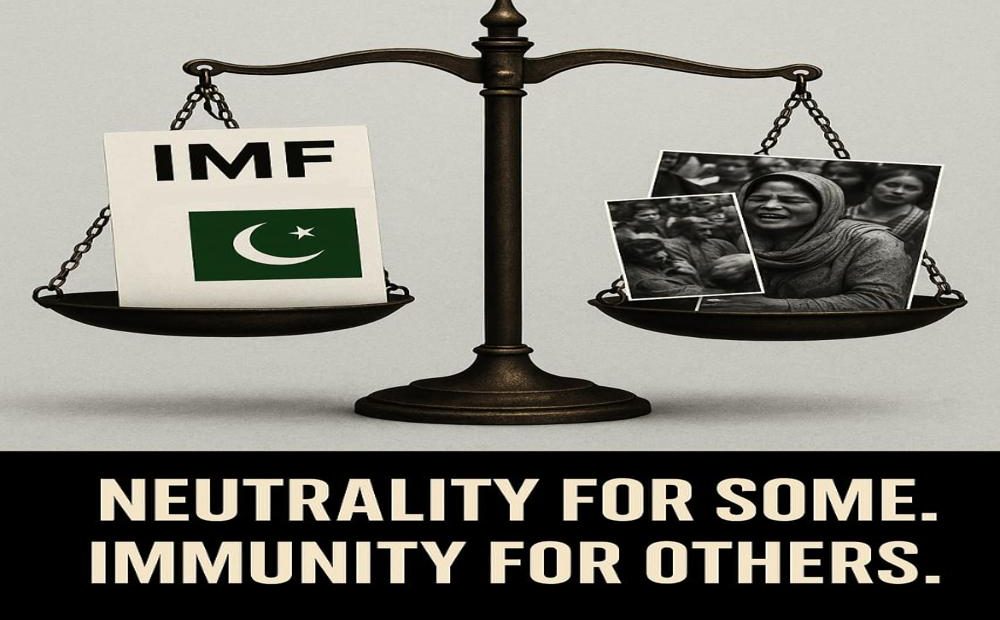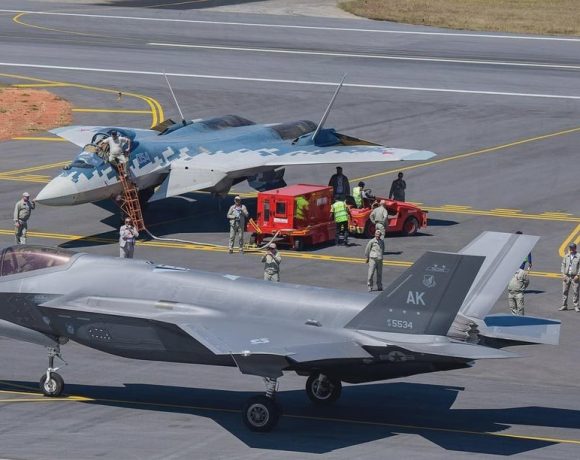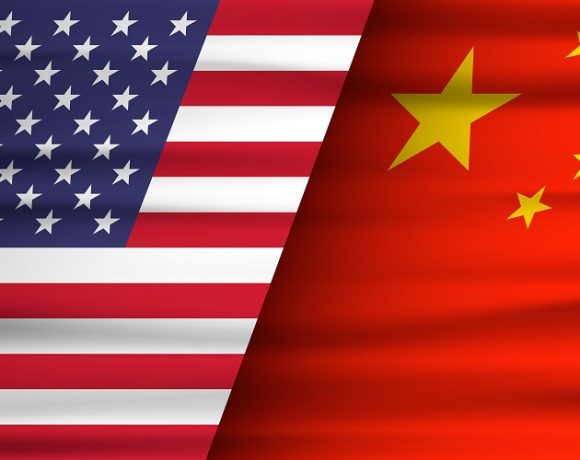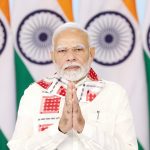
Bleeding in Silence: How India’s Strategic Autonomy Enables Global Inaction on Pakistan’s Terrorism
India has long championed a foreign policy rooted in strategic autonomy—an approach that prioritizes sovereignty, non-alignment, and independent decision-making over formal alliances or geopolitical bloc politics. This doctrine, deeply rooted in India’s post-colonial identity and Cold War experience, has earned the country a reputation as a responsible power, reluctant to be drawn into global conflicts or used as a pawn in great power rivalries. However, in today’s shifting geopolitical landscape, the benefits of this neutrality are increasingly being questioned—especially in the face of sustained cross-border terrorism emanating from Pakistan.
In the wake of renewed drone attacks, targeted strikes, and terror incursions by Pakistan-based entities, the international response has been disturbingly muted. While India endures the strategic, human, and economic cost of these provocations, the world continues to extend financial aid and diplomatic space to Pakistan. The most glaring example is the recent $1 billion IMF loan disbursed to Islamabad—just days after it was accused of using drones and civilian flights as a shield to escalate conflict. India’s abstention from the vote served as a protest, but it did little to alter the outcome. In contrast, no country—not even India’s strategic partners—issued a strong condemnation of Pakistan’s actions.
This white paper explores the fundamental contradiction at the heart of India’s current foreign policy: whether the gains from maintaining strategic neutrality are enough to justify the mounting strategic losses from global indifference. Through a historical, comparative, and real-time analysis, the document argues that India’s restraint and refusal to act as a Western proxy—particularly against China—have rendered it diplomatically disposable. Unlike Israel or Ukraine, whose alignment with Western interests earns them protection, weaponry, and media sympathy, India’s solitary stance has only isolated it in times of crisis.
By examining the evolution of India’s foreign policy, the recurring global silence on Pakistan’s terror infrastructure, and the growing strategic irrelevance that comes with principled non-alignment, this white paper offers a sobering introspection: is bleeding in silence a symbol of dignity—or a dangerous delusion?
II. Introduction: A Nation at War, A World at Ease
In the dead of night on May 8–9, 2025, India’s western front erupted with alerts as an unprecedented swarm of 300–400 drones crossed into its airspace, targeting military infrastructure across Rajasthan, Gujarat, and Jammu. It was a coordinated intrusion by Pakistan—provocative, calculated, and undeniably hostile. This came just days after the Pahalgam terror attack that killed 26 Indians, including tourists and civilians. India responded with measured but forceful precision strikes, taking out key terror infrastructure in Pakistan-occupied Kashmir and across the border. And yet, as blood spilled and tensions surged, the world watched in silence—or worse, indifference.
The IMF, with Western backing, greenlit a $1 billion loan to Pakistan even as Indian intelligence warned that Islamabad’s terror factories were active and its defense establishment was complicit. No sanctions followed. No international outrage was recorded. The Organization of Islamic Cooperation (OIC) had nothing to say about the civilians killed in Kashmir. Western powers issued their standard fare: appeals for “restraint” and “de-escalation.”
India, a nuclear state under attack, found itself diplomatically isolated—again.
This is not an isolated episode, but part of a broader, disturbing pattern. Despite suffering some of the most brutal terror attacks in modern history—26/11, Pulwama, Pathankot, Uri, and now Pahalgam—India has rarely received meaningful international support, let alone solidarity. The pattern holds even in times of open aggression, be it through terrorism, asymmetric warfare, or drone incursions. The world’s collective response? Diplomacy over deterrence. Concerns over condemnations.
The irony is unmistakable. India is seen as a rising power, a “voice of the Global South,” a trusted democracy, and a major defense partner to many Western countries. Yet when it comes to confronting Pakistan’s use of terrorism as statecraft, these very partners retreat into neutrality, often rewarding the aggressor through aid and silence.
The reasons behind this are not just geopolitical convenience—they are rooted in India’s own foreign policy posture. By refusing to act as a military or strategic proxy for Western objectives—especially in their growing confrontation with China—India has rendered itself strategically self-reliant but diplomatically expendable.
This white paper seeks to interrogate whether India’s principled posture of strategic autonomy is still serving its national interest, or if it is time to re-evaluate the cost of standing alone in a world where alliances, not moral high ground, determine the response to aggression.
III. India’s Foreign Policy Doctrine: Strategic Autonomy
India’s foreign policy has long been shaped by the belief that sovereignty is best preserved not through alignment, but through autonomy. This guiding principle—popularly termed “strategic autonomy”—is a legacy of India’s first Prime Minister, Jawaharlal Nehru, who positioned India as a founding member of the Non-Aligned Movement (NAM) during the Cold War. The vision was clear: India would not be a pawn in the U.S.-Soviet rivalry. It would chart its own course, guided by its national interests rather than alliance obligations.
That philosophy continues to influence India’s international conduct, even in today’s multipolar world. While the contours of global power have shifted, India’s commitment to strategic autonomy has remained intact—albeit with more flexibility and pragmatism.
Foundational Pillars of Strategic Autonomy:
1. Non-Alignment, Not Isolation: India abstains from military alliances but remains engaged with all major powers—conducting joint military exercises, signing defense pacts, and deepening economic partnerships.
2. Independent Decision-Making: India has repeatedly shown its willingness to diverge from Western positions when national interest demands it—be it in defending its oil imports from Iran, maintaining close ties with Russia, or refusing to sanction Myanmar or Sri Lanka under Western pressure.
3. Multi-Alignment Strategy: Instead of choosing sides, India engages simultaneously with competing blocs. It is a member of both the Quad (with the U.S., Japan, and Australia) and BRICS (with China and Russia), seeking leverage in all camps without full commitment to any.
4. Non-Interventionist Military Policy: India does not deploy troops for external regime change wars or join offensive multinational coalitions. Its military engagements are largely defensive, peacekeeping, or based on United Nations mandates.
5. Global South Leadership: India presents itself as the voice of the developing world, focusing on equity, climate justice, and sovereign equality in global governance.
Evolved but Unchanged: The Post-Cold War Adaptation
With the collapse of the Soviet Union and the rise of U.S. hegemony, India began to adapt. Economic liberalization in the 1990s necessitated closer ties with the West. The 2005 India-U.S. Civil Nuclear Agreement marked a turning point, but it was carefully framed to preserve independence in foreign policy.
Today, India’s partnerships with the U.S., France, Israel, Australia, and Gulf states are robust, yet transactional. Strategic autonomy remains the foundation—India does not seek protection; it seeks cooperation on its terms.
The Doctrine in Action
Refusing to Condemn Russia: India maintained neutrality in the Russia-Ukraine war, balancing its historic defense ties with Moscow and oil import interests.
Diverging on China: Despite border conflicts, India has avoided joining overt anti-China military alliances. It speaks of Indo-Pacific cooperation but stops short of militarized containment.
Balancing the Middle East: India maintains close ties with Iran, Saudi Arabia, UAE, and Israel—an equilibrium few other nations manage.
The Diplomatic Payoff
Strategic autonomy allows India to be both a defense buyer and seller, a trading partner to the West and East, and a forum-agnostic participant in global affairs. It shields India from being dragged into foreign wars and preserves leverage by keeping all doors open.
But as we shall see in the next section, this principled neutrality has also come at a cost—most acutely felt when India needs support against terrorism from Pakistan, and the world chooses diplomatic distance over solidarity.
IV. The Strategic Rationale: What India Gains From Neutrality
India’s persistent adherence to strategic autonomy is not without logic. The policy framework has provided a cushion of flexibility, allowing India to act in its own interests without being caught in the whiplash of superpower agendas. In a world often polarized between rival geopolitical camps, India’s ability to balance relations across the spectrum has allowed it to extract value from all sides without sacrificing its independence.
Here are the principal gains that have historically justified India’s neutral stance:
1. Freedom of Policy and Action
India is not bound by alliance commitments or military doctrines imposed by foreign powers. It maintains sovereign control over its strategic decisions, including:
When and how to retaliate in regional conflicts.
What positions to take in international forums such as the UN or WTO.
Whether to continue defense, energy, or trade ties with countries under Western sanctions, such as Iran or Russia.
This allows India to avoid being forced into wars of choice—unlike NATO members or U.S. allies that often find themselves dragged into distant conflicts (e.g., Iraq, Syria, Libya, Afghanistan).
2. Strategic Hedging in a Multi-Polar World
India has maximized its room to maneuver in a world of competing power centers:
United States: For defense technology, intelligence sharing, and trade access.
Russia: For legacy weapons systems, energy security, and diplomatic history.
France, Israel, Gulf States: For targeted cooperation in energy, counterterrorism, and infrastructure.
China (cautiously): For economic pragmatism, BRICS collaboration, and border diplomacy.
Rather than being pigeonholed into a single axis, India plays multiple chessboards at once, preserving its own priorities while keeping avenues for negotiation open with all players.
3. Domestic Political and Strategic Stability
Alignment with any superpower bloc, especially against China, could:
Provoke more aggressive Chinese posture on the border and in trade.
Escalate internal dissent from groups that oppose Western hegemony or fear militarization.
Alienate India from segments of the Global South that still distrust Western-led coalitions.
Neutrality enables India to maintain domestic consensus on foreign policy without exacerbating political polarization.
4. Diplomatic Equity and Moral Standing
India’s refusal to blindly follow the West has earned it credibility in parts of Africa, Latin America, the Middle East, and Southeast Asia. It is viewed as a nation that:
Stands on principle rather than pressure.
Speaks for equitable global governance.
Advocates for multipolarity and non-intervention.
This image has helped India secure leadership roles in forums like the G20, SCO, BRICS, and the International Solar Alliance.
5. Economic Autonomy and Trade Diversification
By not tying itself exclusively to Western markets or Chinese supply chains, India maintains diverse trade routes:
Imports oil from Russia, arms from France, and semiconductors from Taiwan.
Exports IT services to the West while building markets in ASEAN, Africa, and the Middle East.
This diversification reduces vulnerability to geopolitical supply shocks and sanctions.
The Dilemma
However, these strategic advantages—while valuable—come with one fatal flaw: they do not translate into solidarity when India faces existential threats from non-state actors or hostile neighbors. As we’ll explore in the next section, neutrality might give India leverage in peacetime—but in moments of crisis, it leaves India to fight its battles alone.
V. The Hidden Cost: Global Inaction on Pakistan’s Terrorism
For all the tactical advantages that strategic autonomy offers India, there is a glaring cost that remains largely unacknowledged in New Delhi’s official discourse: the world’s chronic indifference to Pakistan’s cross-border terrorism. Despite being one of the most consistent victims of state-sponsored terrorism in the post-9/11 world, India finds itself without a reliable international support system in moments of crisis.
This silence is not passive ignorance—it is active apathy, born of convenience, duplicity, and geopolitical disinterest.
1. Terrorism as Routine, Not Crisis
Since the 1990s, Pakistan has used terrorism as a tool of asymmetrical warfare against India. The world knows this. Yet it has been normalized. Attacks that would trigger sweeping international action elsewhere are treated as bilateral “disputes” when they happen in India.
26/11 Mumbai attacks (2008): Even with foreign nationals killed and Pakistani links exposed, global reactions were short-lived. No sanctions on Pakistan. No designation of it as a terror state.
Pulwama attack (2019): 40 Indian soldiers killed by a suicide bomber from Jaish-e-Mohammed. International community called for restraint—from India.
Pahalgam attack (2025) and May 8–9 drone incursions: No global condemnation. Days later, the IMF approved a $1 billion loan for Pakistan.
This selective outrage exposes a brutal truth: Indian lives don’t move global needles—at least not enough to override other nations’ interests.
2. Pakistan Is Never Punished—Only Paid
Pakistan’s strategic geography makes it a perpetual beneficiary of international indulgence. The West—and even China—treats it as a useful asset:
Cold War: U.S. funneled weapons and dollars through Pakistan to bleed the Soviets in Afghanistan.
War on Terror: Even while harboring the Taliban and Osama bin Laden, Pakistan received billions in U.S. military aid.
Today: The IMF, despite India’s objections, continues to bail out a bankrupt Pakistan that is directly funding proxy terror.
The reward for bad behavior? More money. More leverage. Zero accountability.
3. India’s Restraint Is Exploited, Not Respected
New Delhi has made a conscious choice to respond proportionally—even when provoked. But this restraint has not earned admiration—it has earned neglect.
Western capitals see India as “mature” and “stable,” meaning it won’t overreact.
Pakistan, knowing this, feels emboldened to push the envelope.
The global narrative remains falsely balanced: Both sides should de-escalate.
In effect, India is punished for not being erratic. Had India responded the way Israel or the U.S. would, the world might pay attention.
4. The OIC and Islamic Hypocrisy
The Organization of Islamic Cooperation is quick to condemn India over Kashmir laws or mob violence, yet:
Silent on Pakistani terror camps.
Silent on Islamist radicalism bleeding into India.
Silent on drone strikes that target Indian civilians.
When Muslims are victims of India’s counter-terror measures, outrage erupts. When Indians are victims of radical Islamist terrorism, silence reigns.
5. Turkey and China: Complicit in Proxy Warfare
Recent reports have confirmed that Turkish-manufactured drones were supplied to Pakistan and potentially used in incursions across India’s western borders. Meanwhile, China continues to shield Pakistan at international forums like the UN and FATF.
China’s role: Vetoing sanctions on Masood Azhar; investing billions in CPEC that overlaps Indian territory.
Turkey’s role: Positioning itself as a “defender of Islam” while arming a terror-breeding regime.
These alliances deepen India’s security dilemma—and global isolation.
VI. Why the World Looks Away: Strategic Neutrality as Strategic Disposability
India’s decision to preserve its independence from great-power entanglements may seem dignified—but in the cynical architecture of international politics, it has also made India expendable. To many global powers, India is valuable but not vital, present but not aligned, assertive but not aggressive. And in a world where geopolitical support is often transactional, India’s insistence on neutrality has unintentionally rendered it strategically disposable.
1. Not an Ally, Not a Priority
In realpolitik, alliances create obligations. When Ukraine is invaded, NATO countries act. When Israel is attacked, the U.S. Congress mobilizes. But when India is bombed, the West issues press releases—because India is not part of their security calculus.
India is not in NATO.
India is not a formal defense treaty partner.
India refuses to fight in U.S. wars or assist in military containment of China.
Therefore, India’s national security is not their shared burden—it is India’s burden alone.
2. India’s Refusal to Confront China Has Reduced Its Leverage
The single most important strategic priority for the West today is countering China’s rise. In this context:
The U.S. wants India to militarily confront China in the Indo-Pacific.
Japan and Australia expect India to support open navigation operations in the South China Sea.
Europe wants a balancing force against Chinese Belt and Road expansion.
But India—despite Galwan and Ladakh—has largely refrained from becoming an active military front against China. It has neither joined FONOPs nor backed Taiwan militarily nor made the Quad a binding security arrangement.
This refusal to be the West’s eastern sword means the West sees India as non-compliant—and not worth expending political capital for, especially when it faces its own crises.
3. The West’s Legacy Investment in Pakistan
It’s uncomfortable but true: the U.S., UK, and even EU have long-standing institutional pipelines of engagement with Pakistan:
Military-to-military ties
Intelligence coordination (especially during Afghanistan operations)
Financial and humanitarian aid flows via multilateral banks like the IMF and World Bank
Even when Pakistan’s duplicity is obvious, these relationships continue because of:
Legacy inertia
Short-term strategic usefulness
Western interest in keeping Pakistan “just stable enough”
India’s criticism of these patterns is heard—but never acted upon.
4. India Doesn’t Use Leverage, So It Doesn’t Get Results
Unlike countries that weaponize their strategic value—like Turkey (NATO veto power), Israel (Congressional lobby), or Ukraine (EU/NATO ambitions)—India plays the global game passively:
It rarely conditions its cooperation on reciprocation.
It rarely leads public campaigns exposing global double standards.
It avoids disrupting trade, tech, or defense ties even with nations funding its enemies.
In short, India acts like a moral leader, while others act like strategic traders—and traders get more in return.
5. Global South Fatigue: India Is One of Many
India likes to speak for the Global South. But many developing countries feel India is:
Too big to be “one of them,”
Too rich to be a victim,
Too privileged in Western forums to be truly marginalized.
This perception leads to diluted solidarity even from fellow post-colonial states. When Pakistan cries victimhood, the Islamic world rallies. When India cries foul, it often stands alone.
VII. Case Study: Israel and Ukraine vs. India
To understand the real-world cost of strategic neutrality, one only needs to contrast India’s global treatment with that of Israel and Ukraine—two nations that, despite being smaller than India in size and capability, enjoy far more tangible and vocal international support when under threat. These comparisons reveal the premium the world places not on moral high ground, but on strategic utility and alignment.
A. Israel: The Power of Alignment and Aggressive Diplomacy
Israel, a nation perpetually engaged in asymmetric warfare, receives unwavering diplomatic and military support from the United States and many Western powers. Why?
Military Alignment: Israel is effectively the U.S.’s security extension in the Middle East. The Iron Dome missile defense system, funded largely by the U.S., is replenished after every conflict.
Diplomatic Immunity: Even during contentious wars in Gaza or Lebanon, the U.S. uses its veto at the UN Security Council to protect Israel from resolutions that condemn its actions.
Public Narrative Control: Global media, U.S. lawmakers, and pro-Israel lobbies ensure Israel’s security concerns dominate headlines and policymaking discussions.
The Result:
Israel can retaliate harshly and swiftly with full backing.
Sympathy for its people is immediate and institutional.
Security threats to Israel trigger global concern and rapid aid.
India, by contrast:
Faces years of Pakistan-sponsored terrorism without U.S. vetoes.
Receives lukewarm international support for retaliation.
Is advised to show restraint even after mass civilian deaths.
B. Ukraine: The Power of Becoming a Proxy
Ukraine, since 2022, has been the front line of the West’s ideological and military confrontation with Russia. Despite having no prior defense pact with NATO, Ukraine now enjoys:
Tens of billions in military and financial aid.
Real-time intelligence sharing and weapons logistics.
Constant diplomatic support in international forums.
Ukraine’s alignment with Western objectives—countering Russian aggression—has elevated its importance far beyond its economic size or military strength.
The Result:
Ukraine has become the face of resistance against authoritarianism.
Every Russian missile strike brings fresh waves of sanctions.
Public empathy is sustained by a compelling narrative of democratic defiance.
India, on the other hand:
Is seen as “non-committal” in the China vs. West rivalry.
Maintains economic ties with Russia and China.
Refuses to lead or join Western narratives of containment.
Thus, when India is attacked, the West sees no strategic consequence in doing nothing.
C. The Common Thread: Strategic Relevance Gets You Rescue
Israel gets support because it fights West’s enemies.
Ukraine gets support because it bleeds in a West-backed war.
India gets lectures because it refuses to fight anyone else’s war.
This is the brutal calculus of geopolitics: solidarity flows not to the righteous, but to the useful.
VIII. Strategic Autonomy or Strategic Isolation? The Internal Debate
Within India’s strategic community, there is a growing divergence of thought. What was once an uncontested consensus—that strategic autonomy is the bedrock of India’s foreign policy—is now being increasingly challenged by voices who argue that autonomy without alliances amounts to strategic isolation in today’s ruthless global order.
This section explores both sides of the internal debate that is quietly reshaping how India sees itself in the world.
A. The Traditional View: Autonomy as Sovereignty
The Ministry of External Affairs, many retired diplomats, and strategic think tanks rooted in Nehruvian or realist traditions continue to defend India’s path:
Sovereign Decision-Making: They argue that non-alignment has allowed India to steer clear of disastrous Western military adventures.
Policy Independence: India can maintain ties with Russia, trade with Iran, engage with China, and still collaborate with the U.S.—without being forced into binary choices.
Moral Leadership: India’s ability to take independent stands—on Palestine, WTO, climate equity, and Ukraine—is seen as a moral compass for the Global South.
Global Trust: India’s impartiality allows it to mediate and host forums without being perceived as biased, thus amplifying its diplomatic clout.
To them, strategic autonomy is not loneliness—it’s leadership.
B. The Emerging Critique: Autonomy Has Become a Veto on Influence
A new generation of policymakers, military analysts, and foreign policy realists are now challenging this view with hard questions:
Where is the payoff? Despite decades of restraint and neutrality, India is still kept out of key power structures like the UN Security Council, NSG, and NATO+ dialogues.
Who defends India when attacked? No country rushes to India’s side when terror strikes or border violations occur—not even its closest defense partners.
Are we respected or simply tolerated? The West praises India’s independence—but never invests in its security architecture like it does for Ukraine or Taiwan.
What good is moral authority without deterrent power? Influence without leverage is just symbolism. And symbolism doesn’t stop drones, bombs, or cross-border attacks.
To this camp, strategic autonomy has become an excuse for passivity, a way to avoid tough decisions under the banner of principle.
C. The Silent Middle: Pragmatic Recalibration
A third perspective, perhaps the most widely held among India’s current diplomatic corps, suggests:
India need not abandon autonomy but must recalibrate how it uses it.
The goal should not be neutrality for neutrality’s sake, but smart alignment when national interest demands it.
Building mini-alliances in specific theatres (e.g., Indo-Pacific maritime security, West Asian counterterrorism) could give India issue-based support without compromising sovereignty.
India must begin exercising leverage—be it trade access, defense deals, or tech cooperation—to demand reciprocation from the West, the Islamic world, and regional neighbors.
This pragmatic school doesn’t reject strategic autonomy—but it insists it must be strategic, not sentimental.
IX. Possible Pathways Forward
India’s foreign policy is not written in stone. Strategic autonomy need not mean strategic inertia. As global power dynamics shift rapidly—with China’s assertiveness rising, the U.S. recalibrating its alliances, and new threats emerging from tech, terror, and trade—India has both the opportunity and the necessity to redefine what autonomy looks like in the 21st century.
This section outlines three broad pathways India could consider to correct the imbalance between principled independence and practical influence.
A. Without Compromise: Sharpen the Diplomatic Blade
If India chooses to retain strict neutrality, it must become far more aggressive in asserting its position and exposing global hypocrisy.
1. Diplomatic Offense on Pakistan:
Lead multilateral campaigns to designate Pakistan-based groups as global terrorist organizations.
Use data-driven dossiers to shame states and banks still enabling terror financing.
Expose links between IMF aid, terror sanctuaries, and military adventurism.
2. Media Warfare:
Counter international silence through coordinated media campaigns.
Invest in global think tanks, journalists, and forums to tell India’s security story—factually, forcefully, and repeatedly.
3. Global South Coalition-Building:
Form an “Anti-Terror South Bloc” with affected nations in Africa, Southeast Asia, and Latin America to push for a unified global agenda on state-sponsored terrorism.
4. Leverage Markets and Technology:
Use India’s massive consumer base, digital prowess, and manufacturing demand to press partners into action.
Refuse cooperation or access to Indian markets for countries arming or funding Pakistan.
B. With Selective Alignment: Tactical Partnerships Without Ideological Dependency
India can maintain strategic autonomy while selectively aligning where its interests and others’ converge. This approach focuses on smart collaboration, not blind loyalty.
1. Strengthen the Quad Beyond Symbolism:
Push for intelligence-sharing, naval logistics, and real-time threat response protocols in the Indo-Pacific.
Conduct joint cyber-defense operations and anti-drone programs with Quad partners.
2. West Asian Counterterrorism Grid:
Expand trilateral security mechanisms with the UAE and Israel focused on terror funding, digital radicalization, and arms movement across Asia.
3. Europe and Africa: Issue-Based Convergence:
Cooperate on climate tech, anti-piracy missions, and peacekeeping with countries that can amplify India’s diplomatic reach.
Trade defense training and intelligence cooperation for diplomatic backing on Kashmir and terror designations.
4. Red Lines in Foreign Partnerships:
Publicly define what India considers unacceptable support for Pakistan (e.g., drone transfers, terror sanctuary).
Build deterrent diplomacy: those who cross these lines face public rebuke or trade/diplomatic downgrades.
C. With Strategic Pressure: Autonomy That Uses Its Weight
India can also begin using its global economic, demographic, and technological leverage as a form of strategic pressure—subtle but sustained.
1. Rethink “Restraint Doctrine”:
Codify retaliation thresholds for terror strikes—military, cyber, economic—so the world knows where India draws the line.
2. Use Defense Deals as Leverage:
Tie big-ticket defense procurements to diplomatic support or anti-terror cooperation. (If we buy your jets, you condemn the terror that kills our people.)
3. Push for Harder Conditionalities at Multilateral Forums:
Demand counter-terrorism clauses in IMF, UNDP, or World Bank disbursements.
Call out nations using international aid to fund destabilization.
4. Expand Indian Influence Tools:
Grow cultural diplomacy, educational exchanges, and infrastructure aid in South Asia and Africa.
Position India as the counterweight to China and the moral alternative to U.S. military adventurism.
X. Conclusion: Bleeding in Silence Is Not a Virtue
India’s foreign policy of strategic autonomy was born out of dignity, forged in defiance of colonialism, and nurtured in the idealism of sovereign equality. But in today’s fractured world order—where military alliances dictate action, and strategic value trumps shared history—that very autonomy is starting to feel less like strength and more like solitude.
The recent silence following the May 8–9 drone attacks, the Pahalgam massacre, and the continued funding of Pakistan by international institutions, underscores a chilling reality: India’s restraint has earned it neither protection nor priority.
The world continues to arm and finance Pakistan under the pretense of “stability” even as it exports terror across Indian borders. Western capitals, Islamic blocs, and multilateral bodies remain conspicuously unmoved. As India absorbs loss after loss—from innocent pilgrims to frontline soldiers—the response it receives is not justice, but diplomatic blandness. No sanctions. No accountability. Just “restraint” and IMF cheques to the perpetrators.
This is not just geopolitical hypocrisy—it is a systemic betrayal.
In the words of Darshan Walawalkar, Partner at Statscope India Research (www.statscope.in):
“Between 2001 and 2022, Pakistan received over $33 billion in U.S. security assistance, despite harboring terrorists who targeted Indian soil. The IMF has disbursed over $24 billion to Pakistan since 1988—much of it during or after major terror attacks against India. Meanwhile, no multilateral framework exists to penalize state-sponsored terrorism aimed at democratic nations like India. This isn’t neutrality—it’s complicity.”
India now faces a choice. Continue playing the noble loner—or recalibrate its posture to demand, expect, and enforce accountability. Neutrality without deterrence invites danger. Autonomy without alignment invites abandonment.
In the end, bleeding in silence is not a virtue. It is a warning that if India won’t fight others’ wars, no one will fight India’s.
Research Partner:
Statscope India Research
www.statscope.in


















